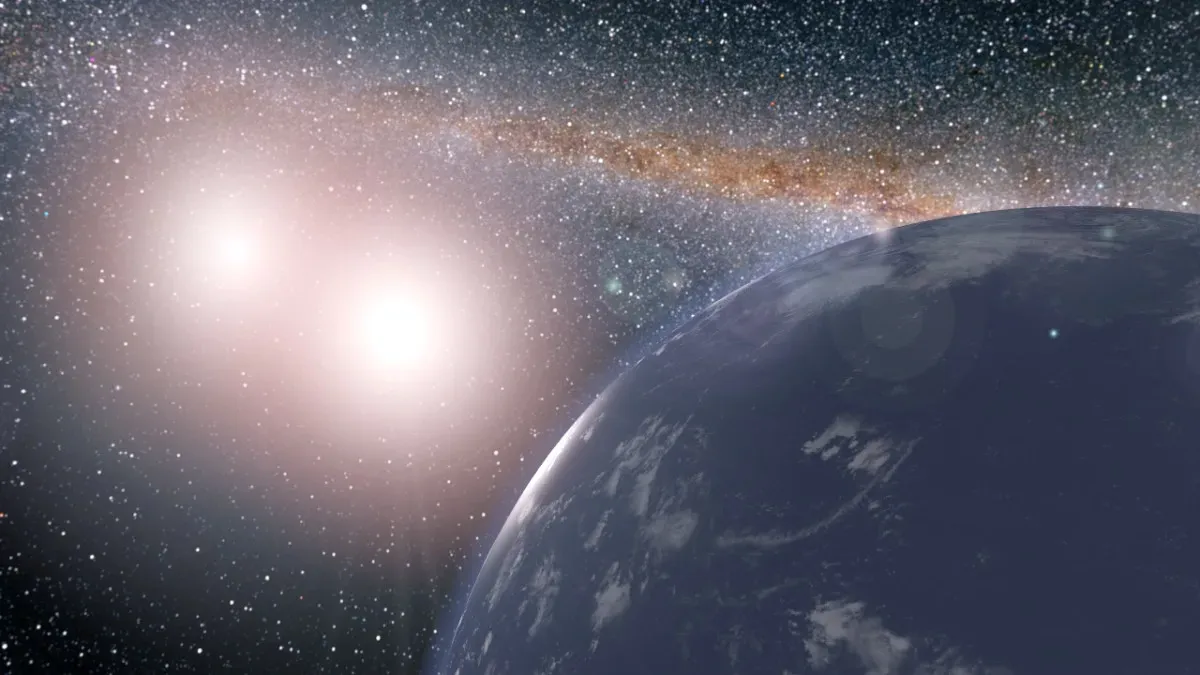How Isaac Asimov used science fiction to point out our biases

Science fiction has a special place in my mind, in that it broadens your horizons and makes you dream, or fear for good. Science fiction has often been used by writers as a satirical tool to highlight problems in society. Flatland comes to mind. One such problem currently is that people tend to think life forms can only exist on Earth-like planets around sun-like stars.
Way back in the 1940s, Isaac Asimov encouraged the idea of life being possible on planets around other stars, half a century before the first exoplanet was even discovered! Asimov imagined life being possible on a planet around not just a single star like in our case, but around multiple stars. Note that this is even before Star Wars showcased their iconic Tatooine planet orbiting two suns. Enter Nightfall.
Nightfall’s story takes place on a planet called Kalgash which orbits six stars! At any given point of time and location on the planet, there is at least one sun in the sky, shining brightly. People on Kalgash have never known a sky without light. Therefore, they don’t know what true darkness is.
They don’t even know there are other stars and planets because they can never see them. The concept of total darkness is as abstract to them as nothingness is to us. They are truly terrified of it.
SPOILER ALERT
As the plot progresses, people on Kalgash are headed for a surprise. Based on the specific way their planet orbits around the six stars, it plunges into darkness every 2049 years and their civilization collapses under extreme madness. On the day before this Nightfall, expecting the doom, a lead scientist on Kalgash comes up with this crazy idea of life on another planet, paraphrased below.
SPOILER ENDS
Scientist: Imagine there are other suns in the Universe like that of ours, but so far away that they are outshone by the light of our mighty suns. However, they can manifest themselves during the darkness which is bound to come tomorrow.
Others: Our six suns, planet Kalgash, that’s all there is to the Universe.
Scientist: Perhaps not. What if those other suns also have planets orbiting them? What if there is a planet around a single star? And life exists on it?
Others: You are taking it too far. We know from our own case that having six suns is the natural way for life to exist.
Scientist: And that’s just one example we know of. If such a planet exists around a single star, as it rotates it will experience half a day of light followed by half a day of darkness!
Others: That would be crazy! Life simply can’t exist on such a planet, because it has constant periods of darkness in it. And we on Kalgash require a constant source of light to function.
Yet, here we are on planet Earth, around our dear sun. Isaac Asimov used science fiction as a tool to point out our bias of expecting life to form only in Earth-like systems. It is to be noted that lately, we’ve found many planets in multiple star systems. I wrote a poem on the topic.
Nature often works its magic in incomprehensible ways and we, as one of its life forms, should be open to what it could offer us.